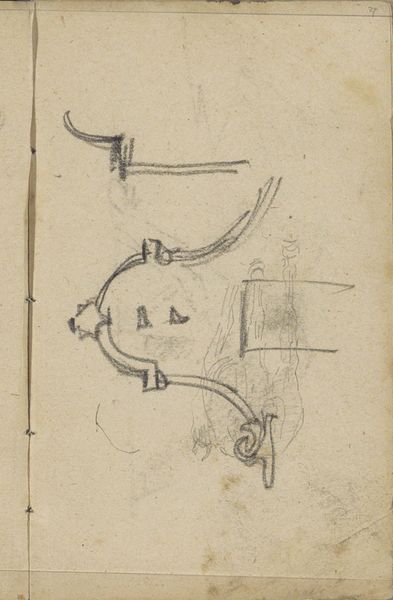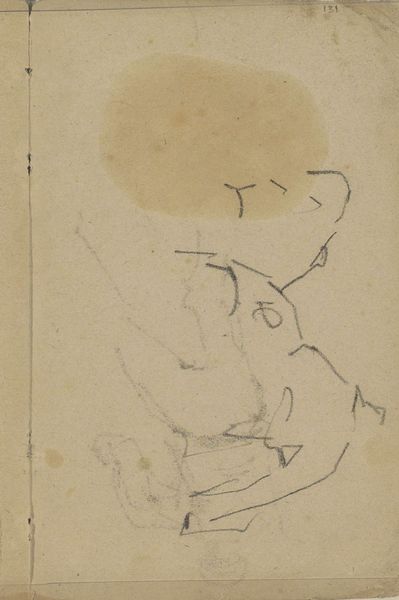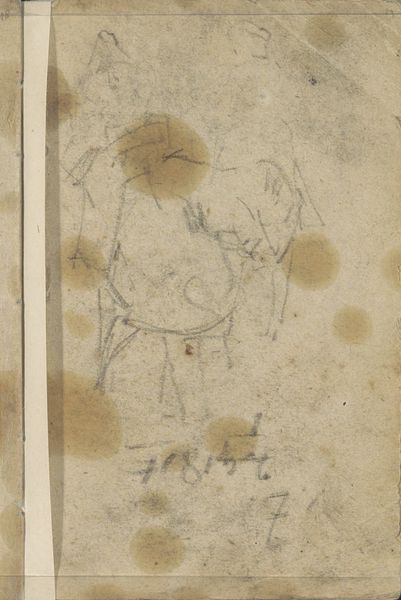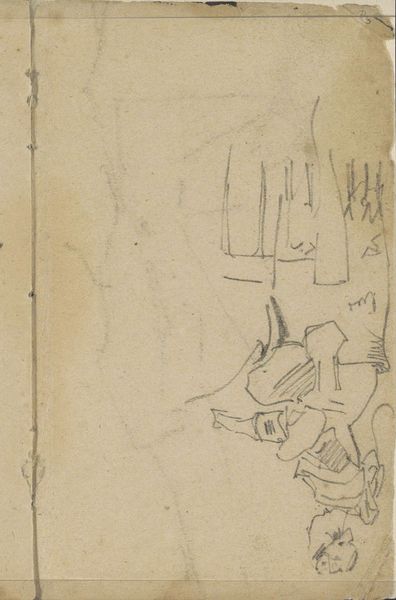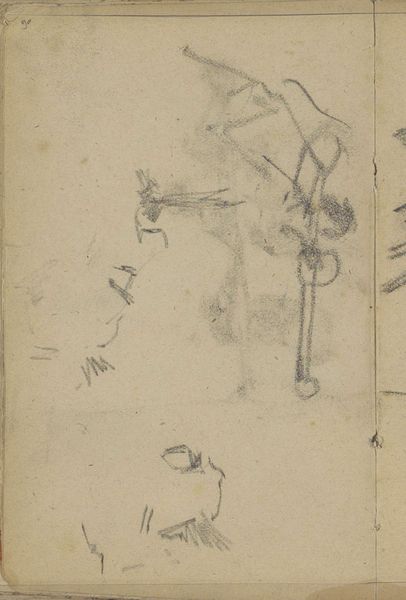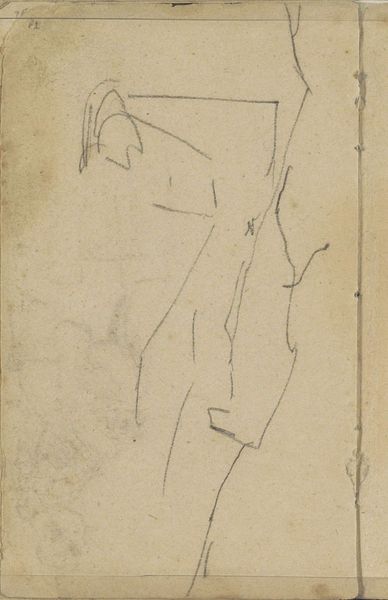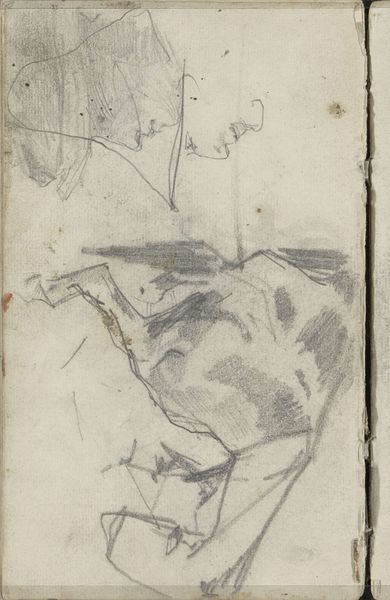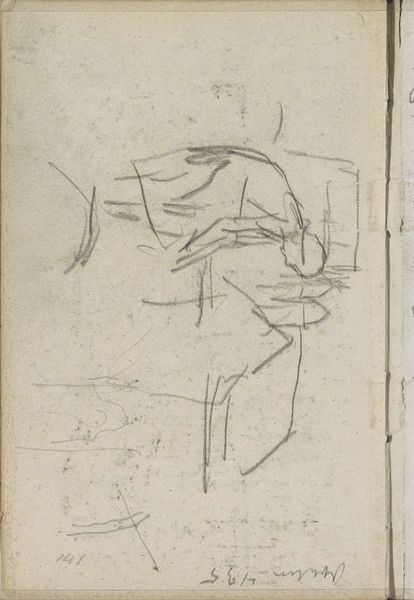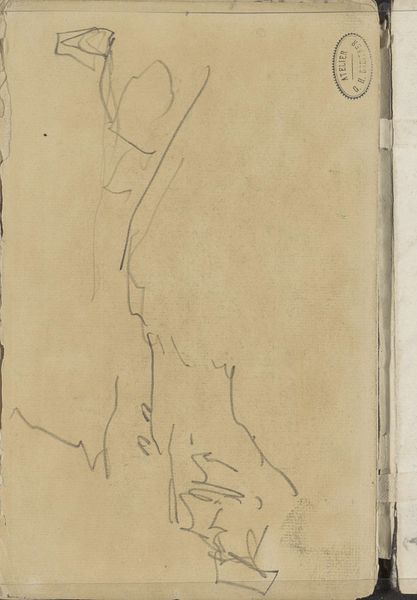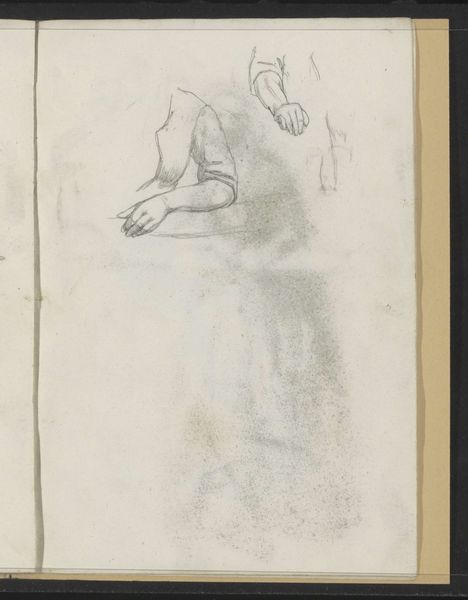
drawing, paper, pencil
#
drawing
#
animal
#
paper
#
pencil
#
realism
Copyright: Rijks Museum: Open Domain
Curator: This is "Study Sheet with Pig Heads," a drawing by George Hendrik Breitner, created sometime between 1881 and 1883. It's done in pencil on paper and currently resides here at the Rijksmuseum. My initial impression is how stark the sketch is—almost brutally simple. Editor: It’s raw, certainly. And given the material, pencil on paper, it emphasizes the rudimentary processes involved in visualizing animal forms. Are these studies for a larger project, perhaps connected to the food industry and meat consumption of the time? What labor processes does it illuminate, and how were such animals integrated into the capitalist cycle? Curator: It’s hard to say definitively without more context. Breitner was known for his depictions of working-class life, so it’s tempting to read these pig heads as symbols of sustenance for those struggling to survive. We see similar subject matter when analyzing Courbet's work and his depictions of everyday working life. The pigs, in this light, represent a social commentary on the disparity between classes. Editor: Absolutely. But beyond social commentary, there’s a level of objectification present, especially considering these drawings are studies. Breitner is essentially deconstructing these animals into marketable commodities through the very act of sketching them. Consider how these drawings engage with and reproduce hierarchies in the world—the animals become things devoid of any dignity to facilitate the work. Curator: I do wonder, though, if that's giving him too little credit, reducing his representation to purely capitalistic terms. His urban landscapes, though often somber, also demonstrate moments of great empathy for working people. But maybe the social realities forced an artist of this era to reduce it to the most rudimentary economic representation. Editor: And that, to me, is precisely the challenge—to recognize both the humanity Breitner sought to capture and the ingrained socio-economic systems that constrained and influenced that representation. Curator: Ultimately, this unassuming study sheet with pig heads leads to interesting conversations about class, labor, and the artist's own position within those power dynamics. Editor: Yes. It certainly encourages deeper inquiry beyond the surface sketch and really sheds light on the social dimensions of our current agricultural landscape.
Comments
No comments
Be the first to comment and join the conversation on the ultimate creative platform.
